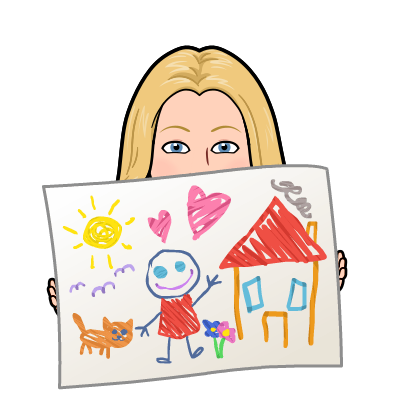Children's books: what makes a good children's book?
- alisonproofreader

- Nov 30, 2019
- 4 min read
Updated: Oct 7, 2020


Children's books: what makes a good children's book?
I have just been on a course called 'developing early reading'. When I arrived I walked into the training room and it was full of children's books displayed beautifully with props. It brought an instant smile to my face and I knew it was going to be a good course. I love children's books and especially the smell of a new book with crisp pages. It was like Christmas had come early for me. I dived straight in and the reading adventure began.
Some of the books I had never read before and have become my new favourites.
For example:
Spinderella by Julia Donaldson, great for children who love football and spiders.
How long is a whale by Alison Limentani, feeds my love of maths.
Would you rather by John Burningham, a game I play with my 6 year old.
There's a dragon in your book by Tom Fletcher (yes, him from McFly), very entertaining and I love anything to do with dragons, reminds me of castles and Wales.
Oh no George by Chris Haughton, I love a book about dogs, especially one that reminds me of my crazy sprointer.
A lion at bedtime by Debi Gliori, with a child who gets visited every night by a stinky lion. Paper bag princess by Robert Munsch, all about girls being assertive and girl power.
The Story of the Little Mole (Who Knew it was None of his Business) by Werner Holzwarth, who spent the whole story looking for who had pooed on his head.
Recipe for a story by Ella Burfoot, breaks down how to create a story simply like a recipe book.
A good book for any age is one which strikes a chord in the heart . . . In a good book one can recognise oneself and come back again and again to find new insights.
Graham and Kelly, 1997
So here is some advice which I learnt on the course about what makes a good children's book. Whether you are a writer, publisher or a children's book fanatic, I hope the information is useful.
Start by thinking about children's interests to base your story around. Try to be different and break the mould - check out the ending of Paper bag princess for testing children's predicting skills of the classic question "what do you think will happen next?".
Think about getting boys into reading more, the course suggested common themes boys might be interested in, such as poo, underpants, worms, real facts and dinosaurs just to name a few. I don't believe in stereotyping, so those themes will be just as good for girls and probably most adults too.
A children's story that can only be enjoyed by children is not a good children's story in the slightest. C.S. Lewis
Then think about your target audience. Babies love books with bright colours or high-contrast pictures like black and white. Babies explore with their senses, so a book with different textures or flaps is ideal. Also everything goes straight into the mouth, so a cloth book or waterproof plastic book is a good idea.
Young children choose books that have bright, bold and appealing illustrations. They enjoy rhyming, catchy text with a predictable format. Children can join in with lots of repetition in the text and enjoy humour with language that will captivate. Reading is important to develop children's vocabulary and research has suggested books should have 'goldilocks' words. These are words to stretch children's vocabulary, for example, when writing instead of 'said' describe it as 'squealed'. Interesting language, especially describing sound effects to guide the reader through what's happening, trip trap trip trap. Story language stays with you forever.
Think about core words and the level of the child the book is for. Use government provided literature to support with understanding what level of words children can read at what age. For example, Letters and sounds guidance published by the DfE for early years and primary education.
Children that are 2-3 years old are best with short stories and the stories can be unstructured and an unrelated collection of statements. Whereas children aged 3-5 years old can have stories which are more organised, the stories can have logical sequences with cause-effect connections. By the age of 5 children are ready for stories which include characters, settings, problems, actions and a resolution. Think about whether the child can identify with the problem and are there clear actions leading to a solution?
If you can plan your book with teachers in mind you are on to a winner. As teachers use books with children every day and tell other teachers about their favourite books too. Teachers use stories that can be acted out or used as a starting point for a project. Look at themes underpinning the National Curriculum, which books could be based around to support teachers. I always used Katie Morag stories to support my teaching of geography in schools.
Talk to your own children about stories. When my two boys are playing they come up with amazing ideas, like catapults attached to arms and battle robots. Who best to design a book for children than children? Overall be brave, be unique and develop children's love of reading.
Create a book that is magical, that children will remember forever!
I am a freelance proofreader with a love of children's books, feel free to contact me if you need support with your writing.
Thank you for reading 'Children's books: what makes a good children's book?' Want to find more out about the joy of reading?
Check out my blog "Reading: the joy of reading" on my website www.alisonproofreader.com, or say hello on Twitter at @alisonproofread, or Instagram at @alisonproofreader, or connect via Facebook and LinkedIn.
Keywords
Target audience - who you are writing for.
DfE - The Department for Education is a department of Her Majesty's Government responsible for education in England.
National Curriculum - a programme of study in schools that is designed to ensure nationwide uniformity of content and standards in education.










Comments